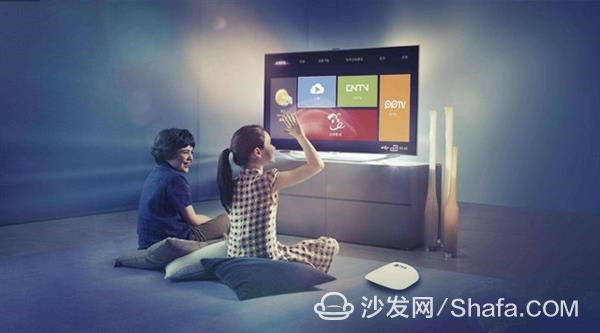Have you ever faced this situation? You turn on the TV, and instead of getting to your favorite show right away, you’re forced to watch a long startup ad. You can't skip it, fast forward, or even shut it off. It's frustrating, isn’t it?
TV ads are everywhere these days.
Back in the early days of online videos, people used to search for content and download it. But as internet bandwidth improved and authorities began regulating content more strictly, streaming became the norm. This shift made advertising a crucial revenue source for video platforms. These 15-second or even 150-second ads were only worth watching if you were a paying member—otherwise, they felt like an unavoidable annoyance.

With the rise of smart TVs and the popularity of the internet, big-screen viewing has become a common experience at home. The point-to-point broadcasting model has brought families a "second screen," which has boosted the big-screen marketing industry. The OTT (Over-The-Top) advertising market is booming. For example, LeTV once charged up to 1.8 million per day for startup ads—comparable to the 10-second ads shown before and after CCTV news. This shows just how valuable this space has become.

The resurgence of big screens in homes has brought OTT advertising into the spotlight. Many people might not know what OTT really means. In short, it refers to internet-based TV services that combine the features of both the internet and television. OTT platforms offer unmatched content, allowing users to not only watch TV but also play games and shop through their devices.
Besides the usual startup ads, what other forms does OTT advertising take?
1. Player list page ads: These appear outside the video frame when the user hasn’t selected full-screen mode.
2. SMD ads: Dynamic video ads that play before the main content starts.
3. Pause ads: These pop up when the user pauses the video.
4. Corner ads: Usually placed in the lower corner of the screen, they don’t interfere with viewing and last longer.
5. Full-screen ads: These appear as static images or GIFs when the app starts.

While the above forms may be acceptable, boot ads have sparked a lot of complaints. Some say “why do I have to watch ads just to turn on my TV?†Others argue, “Why should I pay for a TV and then see ads?†In some cases, TV manufacturers have even been sued over this issue. The reason so many people dislike boot ads is because they don’t understand the logic behind them.
Do you want to see a logo or an ad?
In recent years, both new internet TV brands like Xiaomi and traditional TV manufacturers have entered the smart TV market. With richer content and more applications, smart TVs cater to a broader audience. However, some traditional TVs now come with boot ads, which is a major source of revenue—but also a source of frustration for users.

From a rational perspective, boot ads aren’t entirely unreasonable. Most smart TVs run on Android systems, similar to smartphones. Booting up takes time, and without ads, the screen would either show a brand logo or go black. Inserting ads during this period is understandable.

Moreover, smart TVs require daily updates to keep their content fresh. This process takes time, and even the best hardware will need at least 5 seconds to boot up. Most models take around 10 seconds or more. So, inserting ads during this time isn’t entirely unreasonable.

By inserting ads during the boot-up phase, TV manufacturers can generate revenue, and users avoid staring at a blank or logo screen. It’s a win-win situation. Additionally, OTT ads often target high-value audiences, with brands like Mercedes, BMW, and Coca-Cola investing heavily in this space.
For decades, we’ve watched TV with ads. Why are we suddenly so upset about boot ads?
Television has existed for decades, and for most of that time, we watched through antennas or cable. Ads were always part of the experience—some useful, others annoying. Internet TV changed the game by offering on-demand content, reducing the need to sit through ads. But now, with the rise of smart TVs, we’re back to seeing ads, albeit in a different form.

As more people complain about startup ads on internet TVs, I wonder: aren’t cable TV ads just as bad? Even modern set-top boxes sometimes show ads when turned on. So why are people suddenly so resistant to internet TV boot ads? Maybe it’s a case of “criticizing the egg after eating it.â€

When it comes to ad quality and targeting, internet TV boot ads are actually more precise than traditional TV ads. Through big data analytics, OTT ads can identify specific user groups based on age, location, and purchasing behavior. This means some of the ads you see may be tailored for you.

The purpose of this article isn’t to praise boot ads, but to present an objective view. While they can be annoying, they’re not as bad as we imagine. As the internet ecosystem evolves, OTT advertising is likely to grow even more. As users, we should try to understand the value of ads rather than just complaining. After all, they help fund the content we enjoy.
For more information on smart TVs and boxes, visit Smart TV Info Network Sofa Butler (http://). A leading platform in China for smart TV and box news, offering insights, reviews, software, and more.
Indoor HD Led Display, Indoor HD LED digital signage,Small Pitch Indoor LED display screen,High Integration LED display screen,Indoor LED Display with High Resolution,High-end indoor HD LED display Description
Shenzhen Xinfei Century Technology Co., Ltd. , https://www.rgbdancing.com